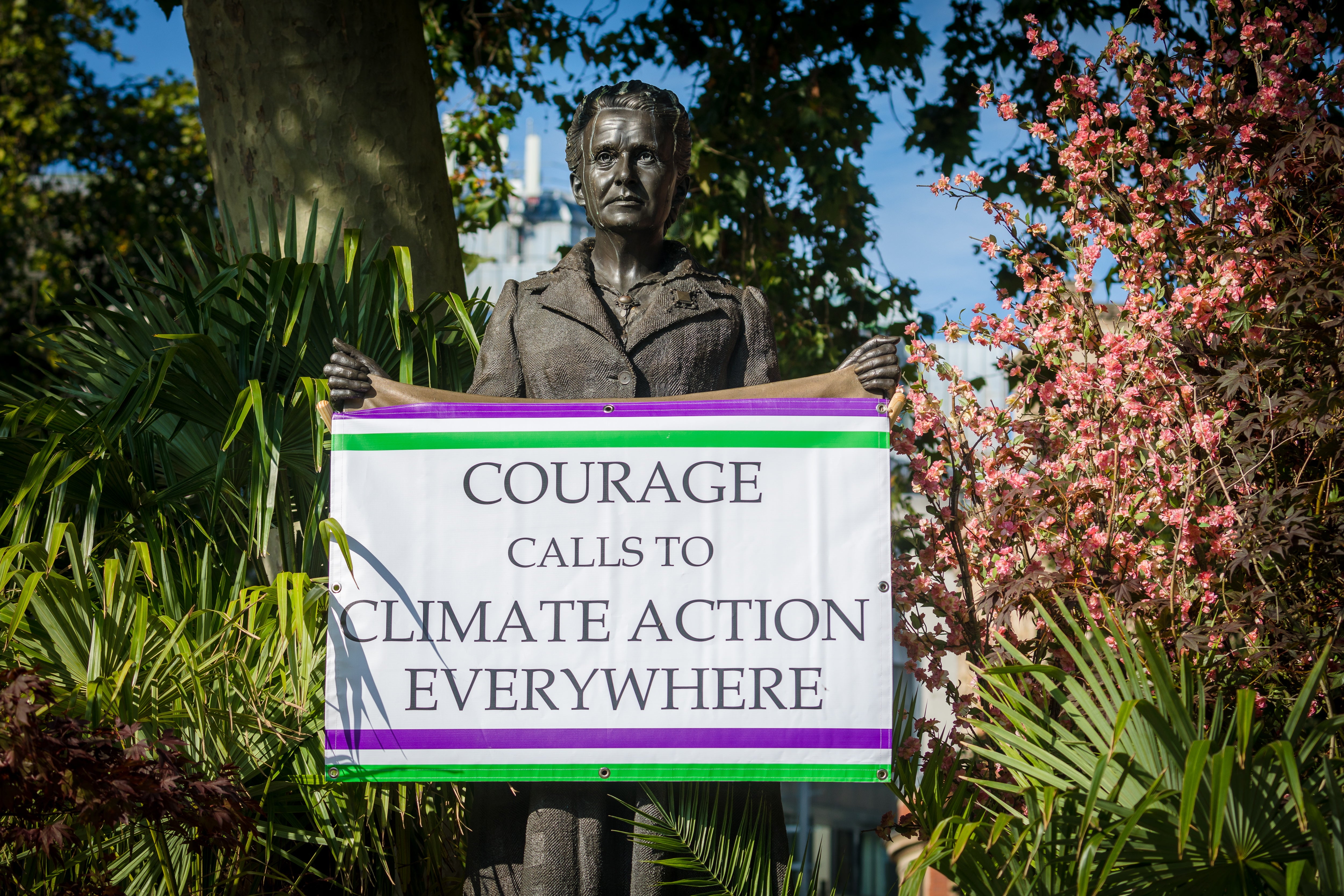The impacts of the climate crisis are not gender neutral
Women and girls are shouldering the burden of deepening inequalities and escalating threats to their sexual and reproductive health and rights


Your support helps us to tell the story
From reproductive rights to climate change to Big Tech, The Independent is on the ground when the story is developing. Whether it's investigating the financials of Elon Musk's pro-Trump PAC or producing our latest documentary, 'The A Word', which shines a light on the American women fighting for reproductive rights, we know how important it is to parse out the facts from the messaging.
At such a critical moment in US history, we need reporters on the ground. Your donation allows us to keep sending journalists to speak to both sides of the story.
The Independent is trusted by Americans across the entire political spectrum. And unlike many other quality news outlets, we choose not to lock Americans out of our reporting and analysis with paywalls. We believe quality journalism should be available to everyone, paid for by those who can afford it.
Your support makes all the difference.From deadly floods and raging fires to scorching heat and punishing drought, the impacts of climate change are inescapable and acutely felt by the poorest and most vulnerable. Many of them are women and girls, who are shouldering the burden of deepening inequalities and escalating threats to their sexual and reproductive health and rights.
The climate crisis multiplies existing vulnerabilities, many linked to poverty. Those with the fewest resources are the ones hardest hit by extreme weather patterns, which can limit access to food, water, and shelter, as well as curtail access to healthcare and education. These impacts can be devastating, especially for women and girls.
Climate-driven poverty, food insecurity, and air pollution are all negatively affecting maternal and newborn health outcomes, with an increased risk of premature deliveries, stillbirths and low birth weight. For displaced women and girls in humanitarian settings, the lack of access to sexual and reproductive health services is one of the leading causes of death.
The aftermath of natural disasters also brings increased protection risks for women and girls. Cyclones in the Asia-Pacific region precipitated spikes in gender-based violence, while tropical storms in Latin America left girls vulnerable to sexual exploitation and abuse.
Families suffering financial hardship and unable to feed their children are more likely to pull their daughters out of school and offer them into marriage. Extended drought in east Africa jeopardised livelihoods and eroded social support structures, increasing the risk of harmful practices such as child marriage and female genital mutilation.
The climate crisis is a major threat to the vision of people-centred development at the heart of the Sustainable Development Goals and the International Conference on Population and Development’s Programme of Action.
Without equal rights and the ability to exercise decision-making over their own bodies, women and girls are simply not on an equal footing when it comes to navigating the devastating consequences of the climate crisis. The better future they have been promised for so long is essentially hanging by a thread.
Perhaps even more worrisome are some of the “solutions” emerging in the fight against the climate crisis. Certain researchers, pundits and even some policymakers continue to propose that “population engineering” and “population control” be used as a tool to counter the current crisis, invoking a dark chapter in the history of family-planning policies.
Neither the problem nor the solution, however, lies with women’s bodies or their reproductive choices. The wealthiest countries with the lowest levels of fertility emit the highest levels of greenhouse gases. An excessive focus on family planning distracts us from the true drivers of the climate crisis, shifting attention away from those primarily responsible and on to marginalised populations already disproportionately affected by its impacts.
Let’s get smarter about climate mitigation strategies and ensure climate action goes hand in hand with efforts to protect women’s health and rights, especially their reproductive choices.
Efforts to date to shore up resilience to climate change have simply not been sufficient, and have failed to apply a gender lens that addresses its outsized impact on women and girls.
Few countries have invested in universal sexual and reproductive health and rights as part of comprehensive climate adaptation efforts. Yet, we know that the expansion of health services empowers women and girls to take control of their bodies and lives, strengthening their ability to adapt to and weather the impacts of the climate crisis.
With global humanitarian needs resulting from climate-related disasters expected to double by 2030, health systems need to adapt to changing conditions and put in place systems that guarantee the continuity of sexual and reproductive health and protection services.
We are at a pivotal moment in the fight against the climate crisis – one that must unite us all.
Tackling inequalities is key to building a healthier, greener planet. That is why it is essential that we address both the climate crisis and gender inequality hand in hand. Importantly, our efforts must ensure that women and girls have a voice in all decision-making. They need to drive action that advances their rights and helps build healthy, resilient communities.
As we chart the course ahead, let us prioritise the health, rights, and safety of women and girls as the pathway to a greener planet and a brighter future for all.
Dr Natalia Kanem is the head of the United Nations Population Fund (UNFPA)
Join our commenting forum
Join thought-provoking conversations, follow other Independent readers and see their replies
Comments